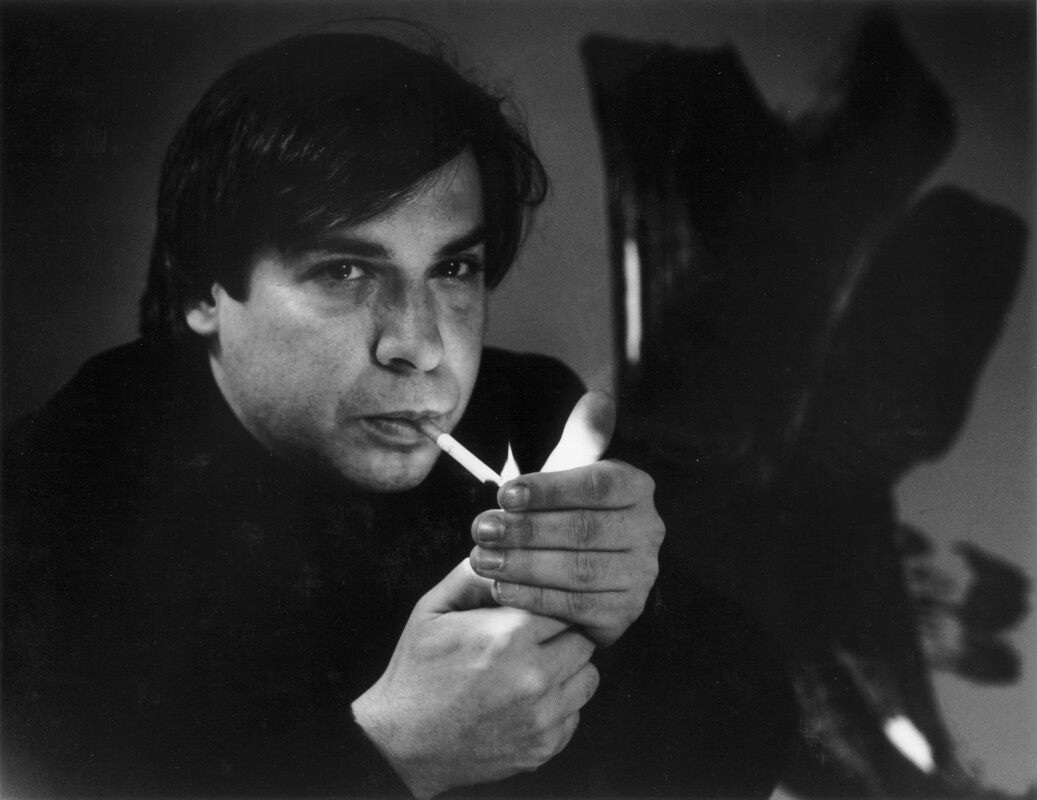
“If you could see these things at once that would be like what I’m trying to make you see in my art.”
A kaleidoscope of brilliant colors and surging forms, Lion Man from 2012 is a paradigm of George Condo’s career-long exploration of and engagement with figurative painting in the twenty-first century. Within the fractured realm of the present work, abstraction and figuration collide with thrilling velocity before the viewer’s eyes; while clearly discernable, the silhouette of the central figure evades clear articulation, as Condo deftly manipulates our ability to read the image before us. Within Condo’s revered large-scale canvases from this period, Lion Man is extraordinary for its vibrant coloration, compositional intricacy, and rich surface of expressionistic brushwork. Between the melee of exaggerated features and fragmented, abstract planes, flashes of the artist’s most important motifs are clearly discernable: Old Master portraits, his own brand of ‘psychological Cubism,’ cartoon references, and a commitment to constantly pushing the boundaries that separate figurative and non-representational painting.

Image © Succession Picasso/DACS, London 2021 / Bridgeman Images
Art© 2021 Estate of Pablo Picasso / Artists Rights Society (ARS), New York
Jean Dubuffet, Papa Tromblon (Portrait), 1967, Private Collection
Art © 2021 Artists Rights Society (ARS), New York / ADAGP, Paris
Epitomized in the present work, Condo’s practice is deeply concerned with examining representations of the figure throughout art history, with the genre of portraiture elevated to a position of tremendous importance within his creative output. Woven into the fabric of his paintings is a renewed interest in inserting art historical tropes in a playful and absurd new context that simultaneously revives, and humorously undermines, the integrity of portraiture. While his early style of portraiture relied heavily on an Old Master sensibility of dark baroque backgrounds and ample brownish tones, Lion Man is a fresh realization of Condo’s more recent output. Combining an intricately constructed central figure with areas of rich, expressionistic brushwork in pewter and charcoal tones, Lion Man revels in Condo’s fusion of fast-paced painting with spontaneous mark-making. Most compelling are the moments where the bright edges of Condo’s colorful and kaleidoscopic figure emerge from the darker areas of purely abstract brushwork which surround him.

“Mr. Condo is not a producer of single precious items consistent in style and long in the making… He’s an artist of variety, plentitude and multiformity. He needs to be seen in an environment that presents him not as a virtuoso soloist but as the master of the massed chorale.”
In its masterful depiction of fragmented figuration, Lion Man evocatively recalls Pablo Picasso’s masterful Cubist facture; yet, where Picasso radically shattered the picture plane to explore multiple viewpoints in the same moment, Condo ruptures his compositions to reveal the multifaceted and kaleidoscopic complexities of human emotion through his aptly self-termed mode of ‘psychological cubism.’ “I try to depict a character’s train of thoughts simultaneously – hysteria, joy, sadness, desperation,” the artist explains. “If you could see these things at once that would be like what I’m trying to make you see in my art.” (George Condo quoted in: Stuart Jeffries, “George Condo: ‘I Was Delirious. Nearly Died’,” The Guardian, 10 February 2014 (online))

ART © 2021 ANDY WARHOL FOUNDATION FOR THE VISUAL ARTS / ARTISTS RIGHTS SOCIETY (ARS), NEW YORK
While Picasso’s fractured and distorted forms have long been a source of influence for Condo, works such as Lion Man mark new area of exploration for the artist. In its expressive brushwork, the highly painterly surface of the present work reveals Condo’s interest in the work of the Abstract Expressionists. Notably, the kaleidoscopic silhouette of the figure in the present work teeters on the periphery of representation, powerfully evoking the equally elusive figuration of Willem de Kooning. As Holland Cotter noted in his review of George Condo: Mental States at the New Museum in 2011: “Mr. Condo is not a producer of single precious items consistent in style and long in the making… He’s an artist of variety, plentitude and multiformity. He needs to be seen in an environment that presents him not as a virtuoso soloist but as the master of the massed chorale.” (Holland Carter, “A Mind Where Picasso Meets Looney Tunes,” The New York Times, 27 January 2011 (online)) As succinctly described by the artist himself: "The only way for me to feel the difference between every other artist and me is to use every artist to become me.” (George Condo quoted in: Jeffries, ibid.)
George Condo: The Artist at Work


